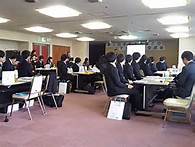

An investor needs to create at least 10 full-time positions through his/her investment in order to qualify for an EB-5 petition.
An “employee” is an individual who provides services or labor in exchange for compensation. “Full time employment” requires a minimum of 35 working hours per week. This does not include independent contractors. Non-immigrants (those with E, H, L, and other temporary worker visas) are not considered U.S. workers for this purpose. Moreover, the investor and his or her family members are not considered as U.S. workers for the 10 full-time employees requirement. Investors are not required to hire 10 employees at the time of initial investment. They may provide a petition with a comprehensive business plan demonstrating the need for at least 10 employees within the next two years. The ten jobs need to be occupied by U.S. citizens, U.S. permanent residents, asylees, or refugees.
In the case of a “troubled business”, meaning the investor invests in a declining business with a net loss for 1 or 2 years equaling at least 20% of total net worth, an investor must show that the number of existing employees in the troubled business is being or will be maintained at no less than the pre-investment level for a period of at least two years. This regulatory provision, while allowing job preservation in place of job creation, does not remove the statutory numeric requirement. In the case of a troubled business investment, ten jobs must be preserved, created, or some combination of the two. For instance, the investor can meet the job creation requirement by preserving the five pre-investment jobs and creating five new qualifying positions.
The Regional Center Program, allows the investor to qualify for an EB-5 green card by directly or indirectly hiring 10 people, whereas an alien investing in a new commercial enterprise under the basic program must satisfy the job requirement through the creation of 10 direct jobs for U.S. workers. USCIS defines direct jobs as those that establish an employer-employee relationship between the newly established commercial enterprise and the persons that they employ. By contrast, USCIS defines indirect jobs as those held by persons who work outside the newly established commercial enterprise. Indirect jobs include equipment manufacturers and services used by a commercial enterprise. Furthermore, Regional Center programs do not require the investor's day-to-day management or involvement in running an active business, nor do they require investors to live in the place of investment. For those investors who have no management knowledge or experience, Regional Center programs provide a more flexible choice.
USCIS now considers direct and indirect construction jobs created by the investor that last for at least 2 years as counting toward the job creation requirement. For instance, if a petitioner can reasonably prove the need for construction work for 35 hours a week over the course of at least two years prior to filing Form I-829, such positions will meet the full-time requirement. However, if on the same project, the petitioner hires electricians who only came intermittently for three or four week periods over the course of the project, such positions would not meet the full-time requirement.
Evidence of Job Creation
In order to show that a new commercial enterprise will create not fewer than ten full-time positions for qualifying employees, an immigrant investor must submit the following evidence:
1. Documentation consisting of photocopies of relevant tax records, Form I-9, or other similar documents for ten qualifying employees, if such employees have already been hired following the establishment of the new commercial enterprise; or,
2. A copy of a comprehensive business plan showing that, due to the nature and projected size of the new commercial enterprise, the need for not fewer than ten qualifying employees will result, including approximate dates, within the next two years, and when such employees will be hired.
In Matter of Ho, a USCIS Administrative Appeals Unit decision, standards for acceptable business plans were explained in greater depth. The AAO held that such a plan should contain a market analysis, including the names of competing businesses and their relative strengths/weaknesses, a comparison of the competition’s products and pricing structures, and a description of the target market/prospective customers of the new commercial enterprise. The plan should list the required permits and licenses obtained. It should describe the manufacturing or production process, the materials required, and the supply sources, if applicable. The plan should include any contracts executed for the supply of materials and/or the distribution of products. It should discuss the marketing strategy of the business, such as pricing, advertising, servicing, etc. The plan should set forth the enterprise’s organizational structure and its personnel’s experience and should explain the business’s staffing requirements with a timetable for hiring and job descriptions for all positions. It should also contain sales, cost, and income projections and detailed explanations for such figures. Most importantly, the business plan must be credible. USCIS will review the business plan for its thoroughness and credibility. A business plan need not contain all these elements, but the more details the plan contains, the more likely it is that the plan will be considered credible and comprehensive.



















